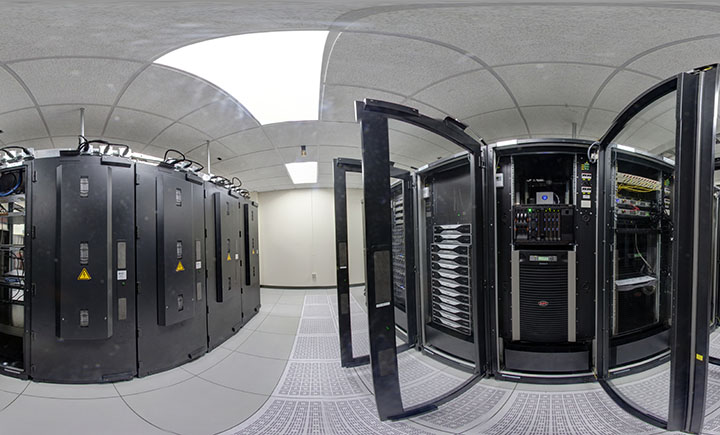A more energy efficient way to cool data centers
The Center for Energy-Smart Electronic Systems collaborated with Future Facilities to develop a localized cooling system that is less wasteful than traditional alternatives.

Start up a complex program on a laptop and most people will instantly hear the whirl of fans trying to rapidly cool down the computer. It’s a common and necessary process for laptops, but also exists on a much larger scale in data centers. Data centers provide a centralized location for various computer systems, like servers that power websites or network-based storage. The Thomas J. Watson School of Engineering and Applied Science has its own data center to support academic and research initiatives as well as general desktop computing. In fact, most large companies have data centers and just like the common laptop, they need to be cooled.
The rapid growth in the number of data centers combined with the high-density heat dissipation from today’s information technology and telecommunications equipment means that finding a way to efficiently cool data centers has become a key research focus.
Traditionally, data centers rely largely on chilled air flow coming from perforated tiles on a raised floor. Unfortunately, this method has a problem when it comes to efficiency. The temperature of certain sections of a data center can vary widely depending on the operational load on the servers in different parts of the data center. The traditional cooling system will generally overcompensate the cooling of the entire room to make up for the times when there is a spike in use in one area.
A project involving both experiments and computational modeling was supported by the Center for Energy-Smart Electronic Systems, which is Binghamton University’s National Science Foundation Industry/University Cooperative Research Center (I/UCRC). The center was established to build partnerships between government, industry and academia to develop more energy efficient data centers.
In a paper titled “Comprehensive Experimental and Computational Analysis of a Fully Contained Hybrid Server Cabinet,” the researchers outlined a localized hybrid air-water cooling system that can more effectively control cooling when certain areas within a data center spike their usage. In this system, the heat generated is actually removed by a self-contained system that does not interact with the overall room level. The computational model was validated by a comprehensive set of experiments and found to be highly accurate. The model was used to investigate different operation scenarios, including potential fan failures or air leakage.
Former PhD student Kourosh Nemati conducted the research with the goal of optimizing the use of localized, contained cooling. Nemati is currently employed by Future Facilities, which is one of the industry partners in the Center for Energy-Smart Electronic Systems. Distinguished Professor of Mechanical Engineering and Vice President of Research Bahgat Sammakia is the director of the center. Sammakia and Bruce Murray, professor of mechanical engineering, both worked on the research project alongside Nemati. These types of partnerships help create a connection among researchers to share knowledge, ideas and equipment as needed.

